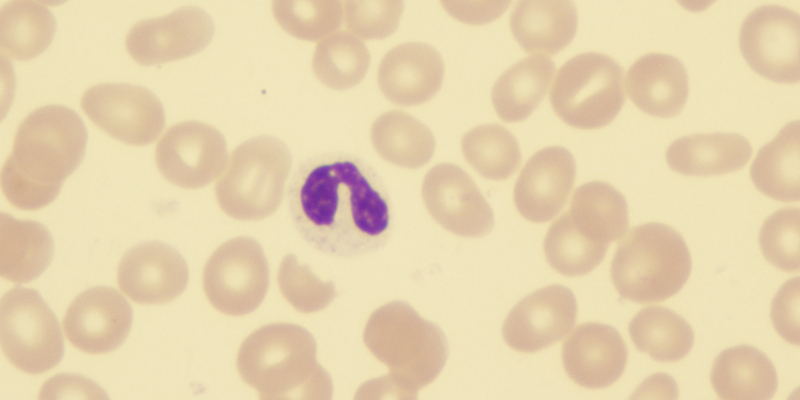
Over 90% of patients with lower-risk myelodysplastic syndromes (MDS) who had low transfusion burden before receiving luspatercept achieved transfusion independence within the first 24 weeks of treatment, according to results from a real-world study.
Sudipto Mukherjee, MD, PhD, MPH, of the Cleveland Clinic, and colleagues conducted the study and presented its findings at the 2022 American Society of Hematology Annual Meeting and Exposition.
Dr. Mukherjee and colleagues conducted the study because “limited evidence exists on treatment patterns and outcomes among [patients] with [lower-risk] MDS treated with luspatercept in routine clinical practice.”
“The aim of this study was to examine [patient] characteristics, treatment patterns, and transfusion outcomes among [patients] with [lower-risk] MDS treated with luspatercept in the real-world setting,” the study’s authors wrote.
The retrospective, observational cohort study included 76 adult patients with lower-risk MDS who received luspatercept for at least three months and had at least three months of follow-up after starting luspatercept or until death, if within three months of the start of treatment. Nearly all patients (92.1%) received one line of systemic treatment for lower-risk MDS before starting luspatercept.
The mean patient age was 72 years at luspatercept treatment initiation, with 52.6% of patients being male and 72.4% being white. The median follow-up was 5.6 months, with a median treatment duration of 13.3 months. All patients received luspatercept at the approved starting dose, 1 mg/kg every three weeks, with 75% of patients receiving it according to the approved U.S. Food and Drug Administration indication.
Nearly all patients (85.5%) had a low transfusion burden at the start of treatment, with 92.3% of those achieving transfusion independence during the first 24 weeks of treatment. The remaining 7.7% of patients maintained a low transfusion burden at that time point. At the start of treatment, 13.2% of patients had a moderate transfusion burden, with all patients transitioning to having a lower transfusion burden during the first 24 weeks of treatment.
Just under one-third (29%) of patients discontinued treatment, with 54.5% of those patients discontinuing treatment at the same dose as their starting dose.
“Among those who discontinued luspatercept treatment, more than half discontinued at the starting dose. Luspatercept dose titration in real-world clinical practice may not align with recommended dose increases according to the approved U.S. indication,” Dr. Mukherjee and colleagues wrote. “This discrepancy represents an unmet clinical need and potential area for further clarification and education in the community setting.”
The most common reason for patients discontinuing treatment was disease progression to higher-risk MDS, occurring in 45.5% of patients. None of the patients discontinued treatment due to adverse events.
“The present study suggests that initiating luspatercept for low or moderate [transfusion burden] may have a substantial impact on [transfusion burden] and merits continued attention as experience with luspatercept in clinical practice accumulates,” Dr. Mukherjee and colleagues concluded.
Reference
Mukherjee S, Brown-Bickerstaff C, McBride A, et al. Real-world outcomes of patients with lower-risk myelodysplastic syndromes (LR-MDS) treated with luspatercept: an evaluation of US clinical practice utilization and treatment patterns. Abstract #389. Presented at the 64th ASH Annual Meeting and Exposition; December 10-13, 2022; New Orleans, Louisiana.






 © 2025 Mashup Media, LLC, a Formedics Property. All Rights Reserved.
© 2025 Mashup Media, LLC, a Formedics Property. All Rights Reserved.